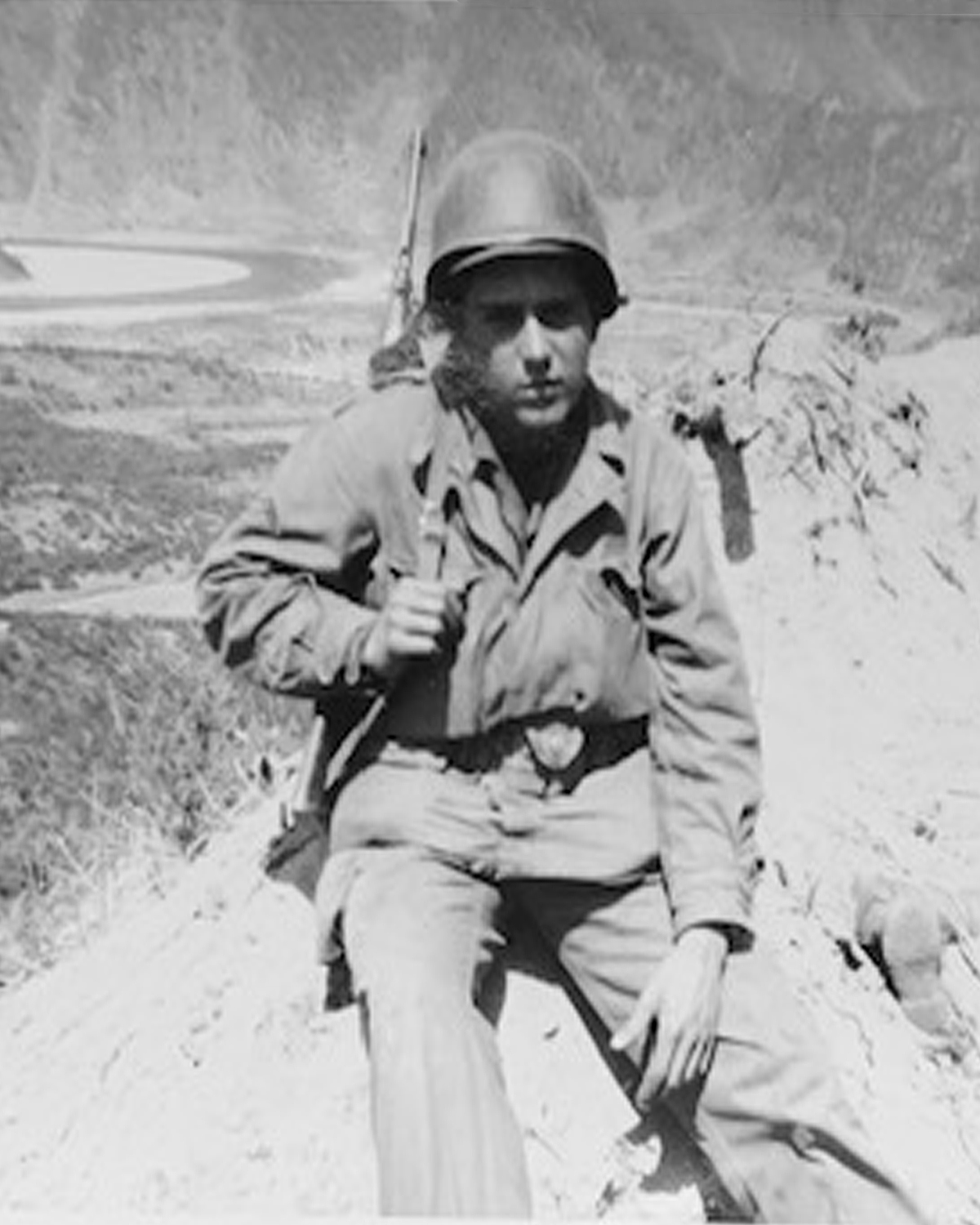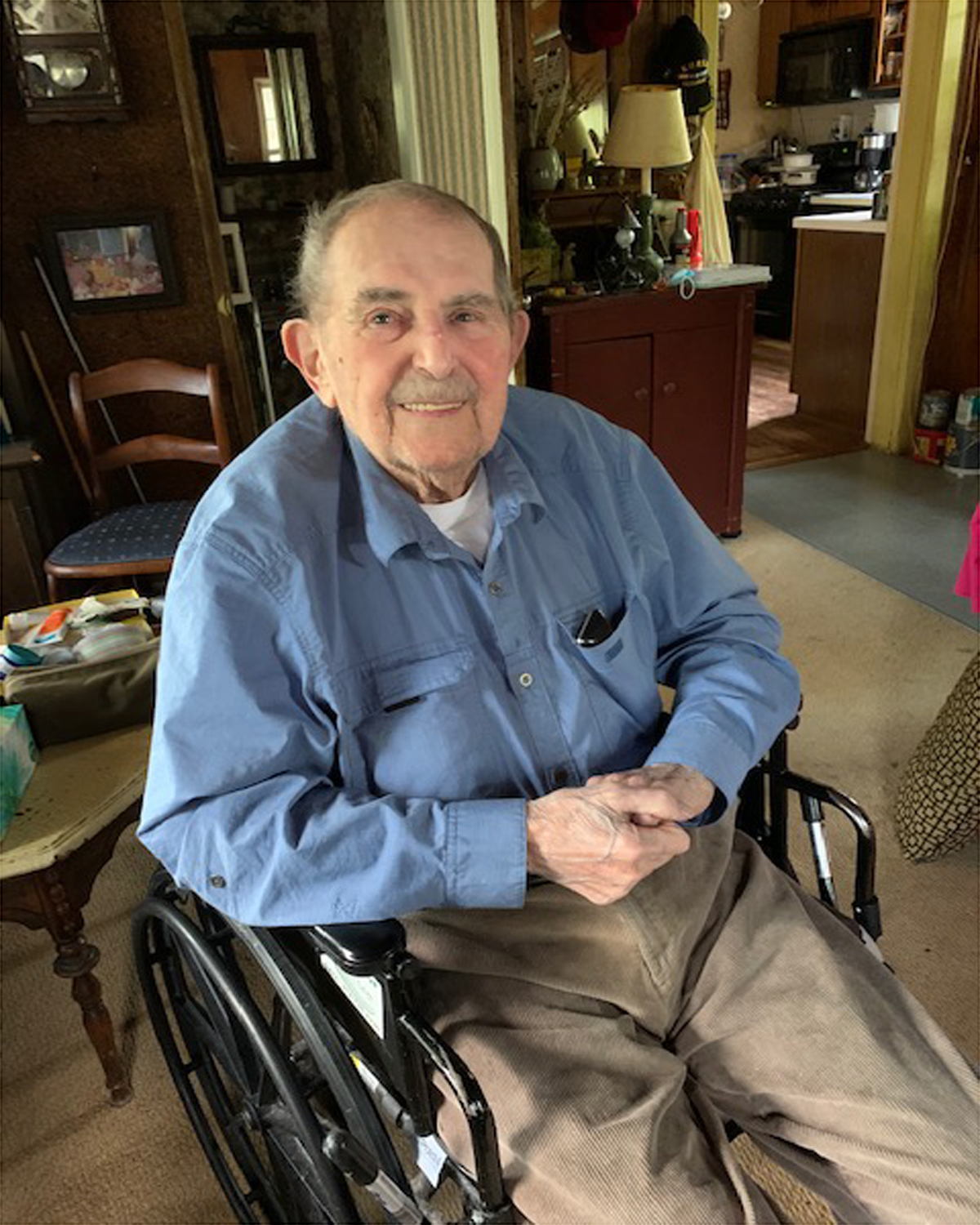U.S. Army Korean War Western Springs, IL Flight date: 08/18/21
By Robert Brown, Honor Flight Chicago Veteran Interview Volunteer
John Kost, the oldest of four brothers, grew up on Chicago’s South Side. He started high school at St. Rita but after his first year transferred to the Augustinian Seminary in Wisconsin, thinking he would become a priest. After graduating from the Augustinian campus on Staten Island in New York in 1945, he opted against the priesthood and instead landed a job in a printing shop. Two years later, Kost received a draft notice, but he suffered acute appendicitis before he could report and was excused. Kost was drafted again in 1949 under what was known then as a “year and a day” plan. He did his Basic Training at Camp Breckinridge in Kentucky, then was sent to Fort Lewis in Washington, joining the 2nd Infantry Division. He finished his year term in early 1950, but that October he received a recall notice ordering him to report immediately, as the Army scrambled to build troop strength to blunt North Korea’s full-scale assault on the southern half of the country.
Kost reported to Fort Lawton, Washington, then boarded a transport to Japan. Many of his fellow soldiers became seasick on the voyage, he said. “Some couldn’t eat at all, but I never missed a meal.” After a short stay in Japan awaiting a change in orders, Kost was shipped to Korea, where he was assigned to the 7th Infantry Division, 32nd Regiment, known as “The Queen’s Own,” arriving in time for Christmas dinner. He joined Company C, which included 40 veterans from the Battle of the Chosin Reservoir, where Army and Marine units fought in brutal freezing weather against an onslaught of Chinese troops attempting to surround and annihilate them.
Kost said his time in Korea was mostly a lot of marching around the mountainous countryside. During the winter months they slept outside in temperatures that fell to 20 below zero. At first they had only sleeping bags to try to fend off the cold but they shared two-man pup tents. Kost got his first taste of combat on Valentine’s Day in 1951, when his unit came under fire from enemy units set up on a hill. “It wasn’t all that bad. You hear the crack when a bullet pierces the air,” he said. “But luckily it didn’t last long.” Beside his carbine, Kost also carried a bazooka his whole time in Korea, but he never had a chance to fire it. “We never saw a tank, except ours.”
In June, Kost experienced the death of a friend with whom he had attended an outdoor church service on Mother’s Day about a month earlier. The company had paused during a march, and Kost noticed the man, whose name he had forgotten, sitting by himself off to the side. “I walked over to see him, but I could tell he was dead,” apparently killed by an enemy infiltrator who had slipped out of a tunnel and shot him in the head, Kost said. “I always wanted to find out what his name was.”
On June 11, 1951, as the U.S. spearhead moved up for the assault on enemy forces perched on a hill in Korea, Army PFC John Kost and his comrades steeled themselves for the battle to come. “Every time we saw them, we knew there was going to be combat,” Kost, now 94, said of the Black Ranger unit leading the attack. From behind their line came three rounds from an Army mortar team meant to soften up the enemy position. Two soared overhead and found their mark, but the third fell far short, exploding with a horrible blast within 40 yards of Kost and his mates. “It wiped out a lot of those guys at the top of the hill … killed the fellow next to me,” remembered Kost. “Twenty soldiers were killed and an equal number wounded.”
Fearing another round could fall among their ranks, Kost scrambled down the ridge. As he was making his way, Kost could feel his right foot sloshing in his boot. He then spotted a blood-soaked hole in his fatigues where a sliver of shrapnel had sliced into his right calf just below his knee.“I didn’t even know I was hit until I got up and ran down the hill,” he said. “I saw the hole in my pants and I knew.”


A couple of soldiers helped Kost back up the slope, and he was hurried onto a waiting truck that brought the wounded to a nearby M.A.S.H. unit. Doctors there stabilized his leg and cleaned up a minor cut on his right arm that also had been cut by flying metal. Within hours, he was on a train heading to the Port of Pusan where he was admitted to a Swedish Red Cross Hospital. Doctors x-rayed his leg and told him that trying to remove the shrapnel shard would cause more harm than good. Kost would have to live with it, so in his leg it has stayed for 70 years.
After he was wounded, Kost spent two months in the Swedish Red Cross Hospital and regained full use of his leg. He was shipped back to the States in September, 1951. A month later he was mustered out of the service from Camp Carson in Colorado. Kost had returned to Chicago when he received a call from an Army officer asking if wanted to remain in the Active Reserves, taking on an administrative role for a training school based at Navy Pier. He remained in the Reserves until 1981, retiring as a master sergeant.
John said his father urged him to go to stenotype school to become a court reporter, and he became quite proficient at it. His dad next helped him land a job at Chicago, Milwaukee and St. Paul Railroad, where he worked his way up the ranks to become an executive secretary, giving him the chance to showcase his 175-word-per-minute speed as a stenographer.“Nobody at the railroad could talk that fast,” he said with a laugh.
In 1962, following an extended 15 year courtship, John married Miriam “Mimi” Yanik, a girl from his South Side neighborhood. They were together for another 55 years before she died in 2017.
Upon his retirement at age 65, Kost was looking for something to fill his days. He always had loved animals, so he volunteered as a docent at the Brookfield Zoo providing insight to visitors about the animals. He did that for about 19 years until leg problems made it too difficult to get around.
In March 2019, Kost fell in his bedroom, breaking the femoral neck in his right leg. Since then he has been confined to a wheelchair. Nevertheless, Kost maintains an upbeat attitude. Throughout his life, he says, he never gave much thought to the piece of metal he carried in his leg. “I didn’t see it until just a few years ago when I had an x-ray as I was thinking about getting knee surgery.”
Military discharge records show Kost was awarded a Purple Heart, as well as a Combat Infantry Badge and Korean Service Medal with three campaign stars. But Kost insists he never received the Purple Heart for his wound, saying he was told he was ineligible because he was hit by friendly fire. However, this Pentagon rule was changed in 1999 and now Illinois Congresswoman Marie Newman, 3rd Congressional District, is attempting to secure the award for Kost. Her office is working with the Army to complete all the necessary paperwork in the hopes it can be presented to him as soon as possible.
Thank you for your service to our country, John. Enjoy your well-deserved Honor Flight!


